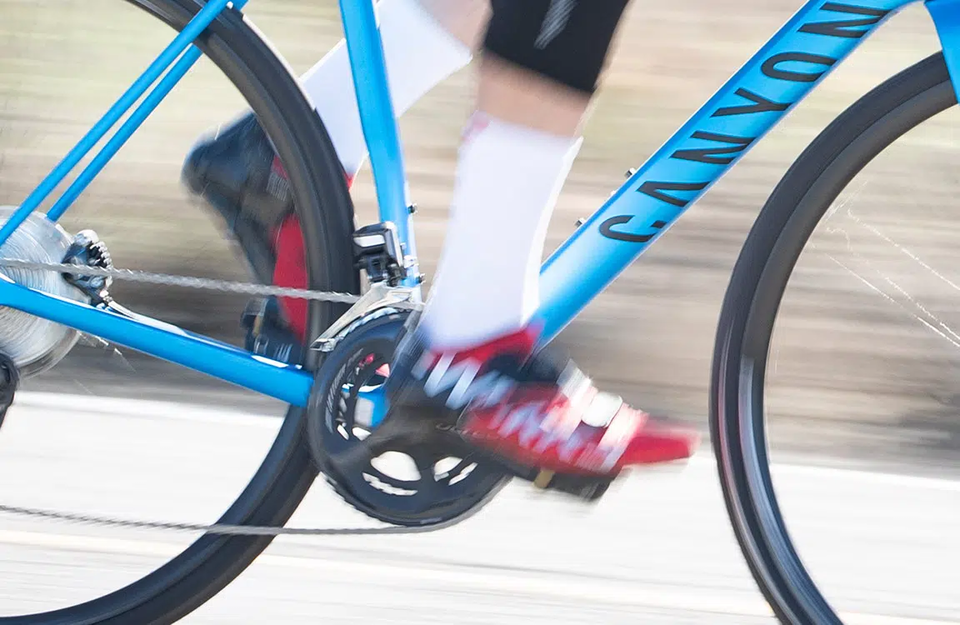Now it's Time to Build Anaerobic Capacity!
Best Cycling Workouts for Developing Anaerobic Capacity for Winning Accelerations. It’s time to move on from Zone 2!

Endurance athletes spend a tremendous amount of time training to increase aerobic endurance, maximize sustainable power at lactate threshold, and maximize aerobic capacity (VO2max). All these efforts are aimed at improving the delivery and utilization of oxygen in working muscles. The result is that you can produce more energy more quickly and subsequently do more work at a sustainable intensity. But the important moments of races or rides often demand a higher and unsustainable intensity level. This is where anaerobic capacity comes into play.
Thankfully, although the concept of anaerobic capacity may seem complicated, the workouts to improve it are simple (but not easy!).
How to Increase Anaerobic Capacity
Before designing workouts, we have to know a bit about glycolysis. Then we need to know how to create a training stimulus that will lead to positive adaptations. Glycolysis is an energy express lane that splits a molecule of glucose to quickly liberates some of its energy. Lactate is one of the products created as a result. The lactate is then processed completely (but more slowly) through regular aerobic metabolism in mitochondria.
Your anaerobic capacity is the amount of work you can perform at an intensity above lactate threshold power output. The amount of work you can do stays the same. That means you could perform a higher power but shorter effort. Or, you could perform a slightly longer effort at a lower power output. Let’s say a cyclist has a lactate threshold of 300 watts and an anaerobic capacity of 20 Kilojoules (the work they can produce). He or she could us their anaerobic capacity for a 1000-watt sprint that lasts just under 30 seconds or a 500-watt effort that lasts 1:45. To instead produce 1200 watts for that 30-second sprint, or to maintain that 500 watt effort for 2 minutes, anaerobic capacity must increase.
To increase anaerobic capacity, you must perform efforts that burn through the maximum energy you can produce through glycolysis. That means repeated short, hard efforts above lactate threshold that rely heavily on fast-twitch muscle fibers. Making the intervals too long is a mistake athletes make when trying to develop anaerobic capacity. As intervals get longer, the energy contribution from the aerobic system increases. And as you empty the anaerobic tank, so to speak, power output decreases until you’re back to performing at a sustainable aerobic intensity.
Workouts for Developing Anaerobic Capacity
Efforts that target the development of anaerobic capacity include maximum power efforts of up to about 30-60 seconds. Once you get closer to the 2-minute duration you will be targeting VO2max more than anaerobic capacity.
A few of the best workouts for developing anaerobic capacity include:
Anaerobic PowerIntervals
Power Intervals can develop power at VO2max or anaerobic capacity, depending on how the workout structure. To develop anaerobic capacity, perform 6 intervals of 30-40 seconds each. The intensity should be the highest power output you can sustain for the duration of the interval. It should take everything you have to maintain your output at the end of the effort.
Take 5-7 minutes of easy spinning recovery between intervals. These are purposely long recovery periods between intervals because each effort should deplete your anaerobic capacity (really empty the tank) and you need adequate time for it to replenish. This is why it’s kind of tricky to prescribe an intensity range for these intervals as a percentage of FTP. We generally prescribe it as 120%-150% of FTP. However, it’s best to think of it as aiming to be as far above FTP as you can manage for the duration of the interval.
In contrast, when we prescribe short PowerIntervals with short recoveries (like 10×30 seconds separated by 30 second recovery), the workout is more targeted toward lactate tolerance and repeatability.
Hilltop Sprints
Performing intervals uphill increases resistance and can help athletes achieve a higher power output, which is important for developing anaerobic capacity. Find a moderate to steep hill you can complete in 45-60 seconds. As with the PowerIntervals above, aim for the highest power you can manage, and maintain that power over the top of the hill, rather than stopping the interval at or before the summit. Your actual power for these efforts will be slightly lower than the Anaerobic PowerIntervals because the efforts are longer. Recovery periods between these efforts can also be a little shorter, but still on the order of 3-5 minutes.
Adjusting for progress
Both of the workouts above can be scaled up for more advanced riders by increasing the number of intervals or creating two sets of intervals separated by a longer recovery period between sets. The interval durations, however, should not increase, because the duration is what is defining the physiological stress. As anaerobic capacity increases, you’ll produce higher power during 30-second Anerobic PowerIntervals or 45-second Hilltop Sprints, and you’ll be able to repeat more of them before your power output drops. If power drops more than 10% compared to your second or third effort, you’re done for the session, no matter how many intervals you had planned.
Summary
Anaerobic capacity workouts are very taxing, despite total time-at-intensity being just 5-10 minutes. The intensity is very high, so these should only be completed when you are fresh. And they are typically separated by at least one full day, if not two or three days. The good news, considering how hard these workouts are, is that you don’t need to complete many of them to see improvement. Incorporate them into your training once or twice a week over 4-5 weeks and you’ll see improvement. Just remember to schedule them for days when you will be well rested. These are not workouts that will be effective if done on tired legs.
By Chris Carmichael,
CTS Founder and Chief Endurance Officer
The above is a short excerpt from the full CTS TrainRight article, to read the full article, please visit: https://trainright.com/cycling-workouts-for-anaerobic-capacity
FREE 14 DAY MEMBERSHIP TRIAL
Gran Fondo Guide fans, click on the image above and get TrainRight Membership for a 14 day no obligation trial. TrainRight Membership comes with a 30-day money-back guarantee!
About CTS
As it has since 2000, Carmichael Training Systems leads the endurance coaching industry with proven and innovative products, services, and content. And the results speak for themselves; no other coaching company produces more champions, in such a wide variety of sports and age groups, than CTS.
For more information, please visit: https://trainright.com

